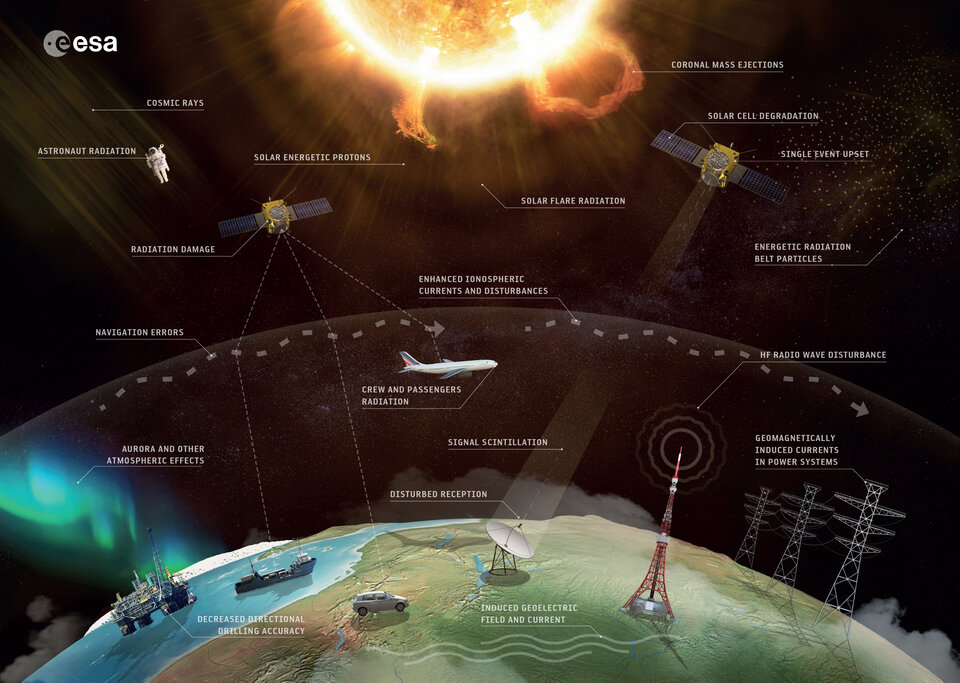Solar storm disrupts air navigation in Colombia
Colombia’s Civil Aviation Authority has announced that some flight schedules may be adjusted due to disruptions in satellite navigation systems caused by a solar storm. According to forecasts, these effects could persist through Sunday, May 25. In light of this situation, passengers are advised to check with their airlines for potential changes to their flights.
Solar storm: What is it and how does it affect air navigation?
A geomagnetic storm, commonly referred to as a solar storm, is a temporary disturbance in Earth’s magnetosphere triggered by a solar wind shockwave or a coronal mass ejection (CME) interacting with the planet’s magnetic field.
The phenomenon begins with an increase in solar wind pressure, which compresses the magnetosphere. As the magnetic fields of the solar wind and Earth interact, energy is transferred into the magnetosphere, intensifying plasma movement and electric currents within both the magnetosphere and the ionosphere.
During the storm’s peak phase, these currents generate forces that alter the boundary between the magnetosphere and the solar wind. The event can originate from a CME, a high-speed stream (associated with a co-rotating interaction region or CIR), a coronal hole, or a solar flare—each linked to areas of the Sun with weak magnetic fields.
The frequency of such storms varies with the solar cycle. CMEs are more common during the solar maximum, while CIRs dominate during the solar minimum.

These solar events are often associated with other forms of space weather, including solar energetic particles (SEP), geomagnetically induced currents (GIC), ionospheric disturbances affecting radio and radar communications, navigation system failures, and even auroras visible at unusual latitudes. The effects may become noticeable on Earth approximately 52 hours after the solar event and can last for several days—provided the shockwave is directed toward the planet.

/https://aviacionlinecdn.eleco.com.ar/media/2025/05/control_aereo_colombia_simulador.jpg)
Para comentar, debés estar registradoPor favor, iniciá sesión